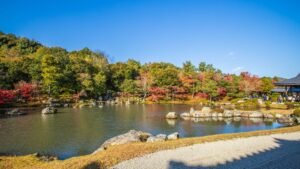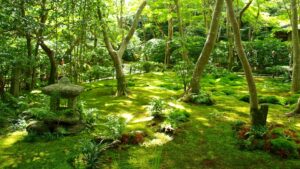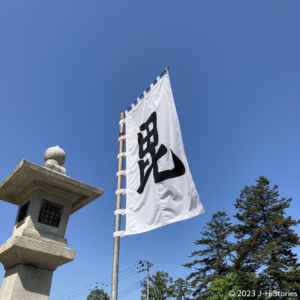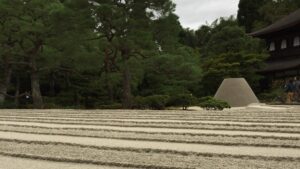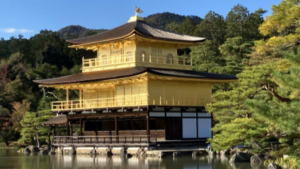Tenryuji Temple, Shogun Ashikaga Takauji Mourned Emperor Go-Daigo
Located at Arashiyama, Shogun Ashikaga Takauji built Tenryuji Temple to mourn Emperor Go-Daigo. Sogen pond garden and Could Dragon painting are specutacler.
Kyoto Imperial Palace, Successive Emperor's Residence
The Heian-kyo had been the center of the nation where the successive emperors resided for over 1200 years since the capital relocation from Nara in 794 by the 50th Emperor Kanmu until 1869 when Emperor Meiji moved to Tokyo, one year after the Meiji Restoration. The highlight is the beautiful Shishinden Hall with its cypress […]
Honpoji Temple, The Precursor of the Rimpa School, Hon'ami Koetsu's World of Faith and Beauty
The tender green of the trees from outside is reflected on the polished stone floor at Honpoji Temple in Kyoto. The colors shimmer on the black surface and create a tranquil atmosphere. It’s incredibly beautiful. Honpoji Temple stands as one of the temples within the Nichiren Sect of Buddhism, established by Priest Nisshin during the […]
Yoshino Jingu Shrine and Yoshimizu Shrine: The Heart of the Southern Court, Dedicated to Emperor Go-Daigo
In spring, Mt. Yoshino is adorned with approximately 30,000 cherry blossoms in full bloom, comprising about 200 different varieties of Yamazakura, mountain cherry blossoms, gradually reach full bloom in four areas - Shimo, Naka, Kami, and Oku – ascending from the base to the summit, taking about a month to unfold fully. The panoramic view […]
Saihoji (Moss Temple): The pinnacle temple created by Zen Priest and Garden Designer, Muso Soseki
The ultimate beauty of nature's formations Saiho-ji, a UNESCO World Heritage Site, known as the Moss Temple, is a Rinzai Zen Buddhist temple that held a special place in Steve Jobs’ heart, drawing him to visit it several times. This enchanting temple boasts a 5,000 square meter garden adorned with approximately 120 distinct varieties of […]
The God of War, Kenshin, and the Muromachi Shogunate Revival
Uesugi Kenshin (1530-1578, 上杉謙信) was a fervent believer in the god of war, Bishamonten (毘沙門天), using one of the letters of '毘' as an emblem on his own flag, and fighting under the banner of 'Bi'. During his lifetime, he lost only twice out of 71 battles, making him a true military god. During the […]
The history of Ginkakuji Kyoto as a moon-viewing temple
Ginkakuji Temple (Silver Pavilion), a World Heritage Site and a National Treasure is nestled amidst the serene Mt. Higashiyama, far from the bustling heart of Kyoto. Ashikaga Yoshimasa (1436-1490, 足利義政), the 8th Shogun of the Muromachi Shogunate (1336-1573), ordered its establishment during the latter years of his reign. Why did Yoshimasa enjoy the rising moon […]
Kinkakuji Temple (Golden Pavillion), Represents, from the top down, Buddhism, Samurai, and Court Nobles
Kinkakuji Temple (Golden Pavillion) - a World Heritage Site - is a reliquary hall of Rokuon-ji Temple built by the third shogun of the Muromachi Shogunate (1336-1573), Ashikaga Yoshimitsu, after handing the position of Shogun over to his son and assumed a Buddhist priest. The third floor is a Zen Buddhist monastery with several rounded […]

